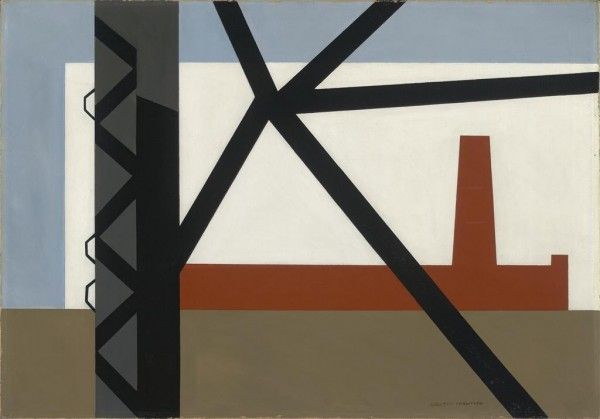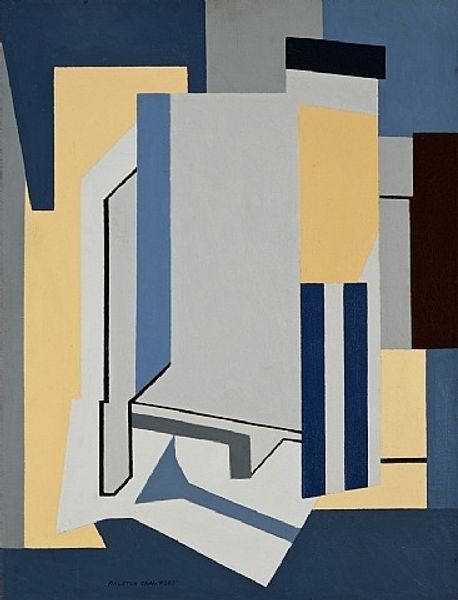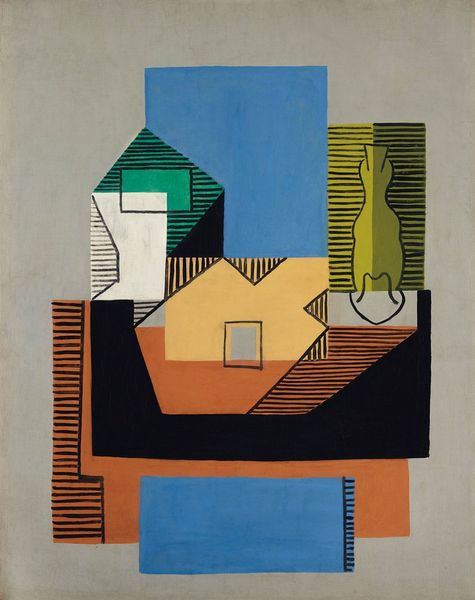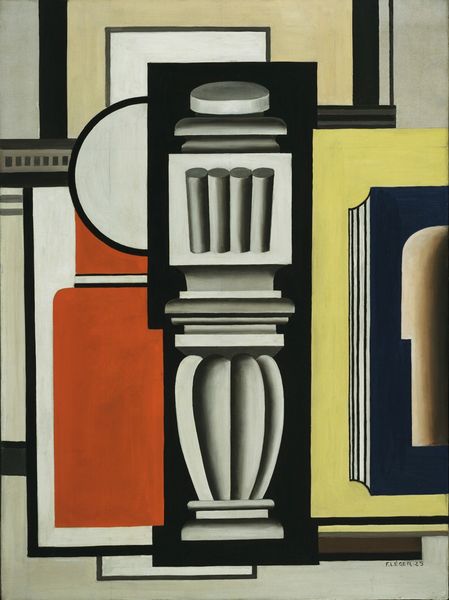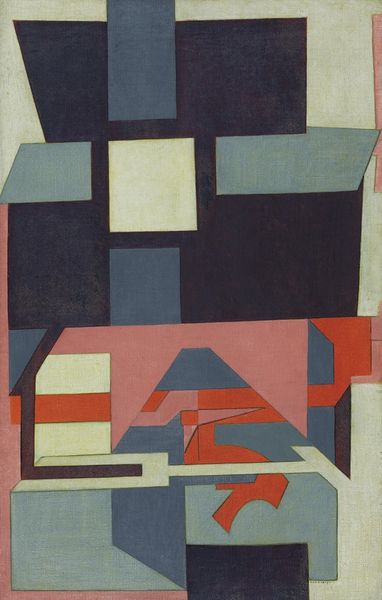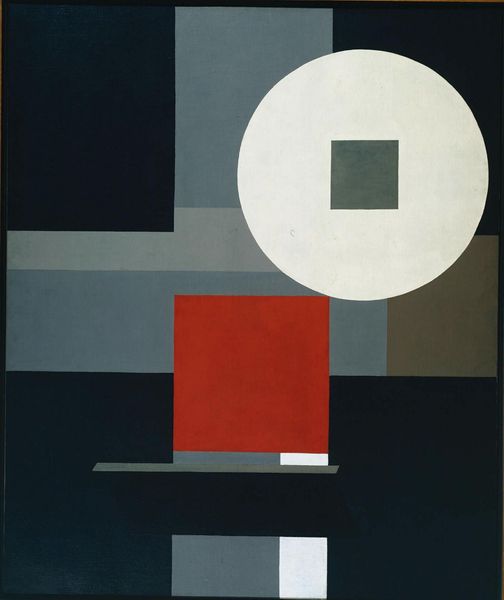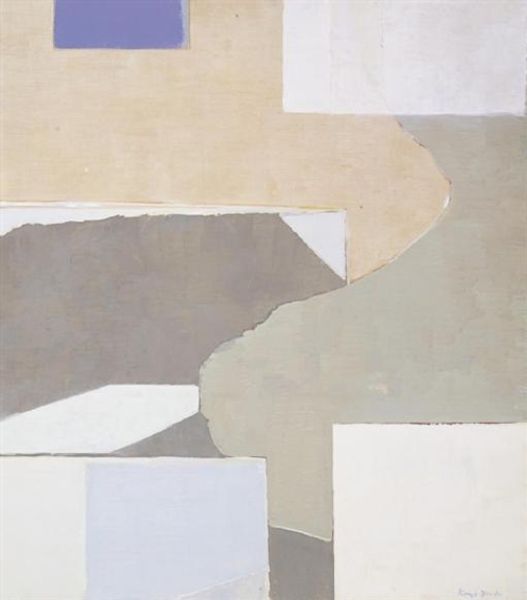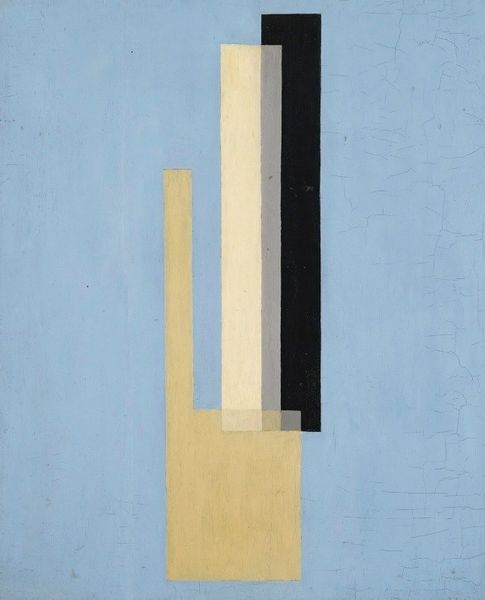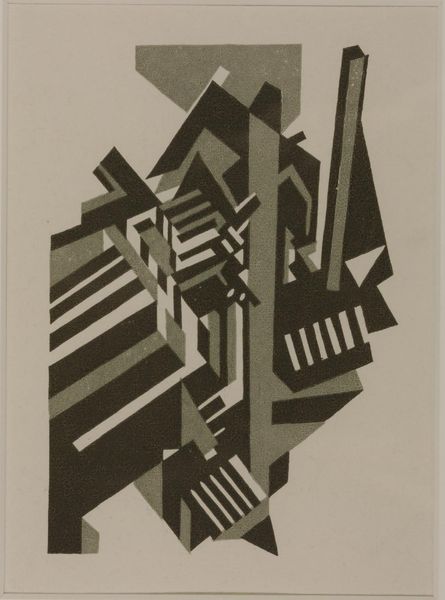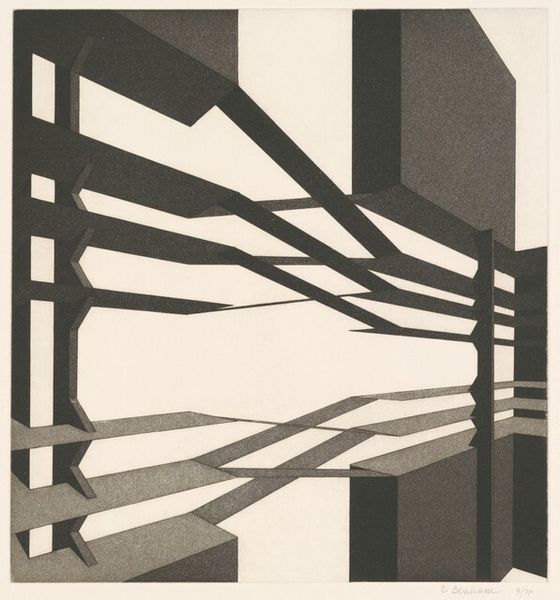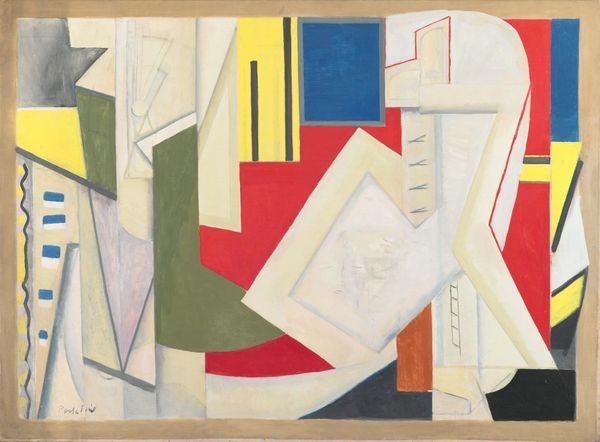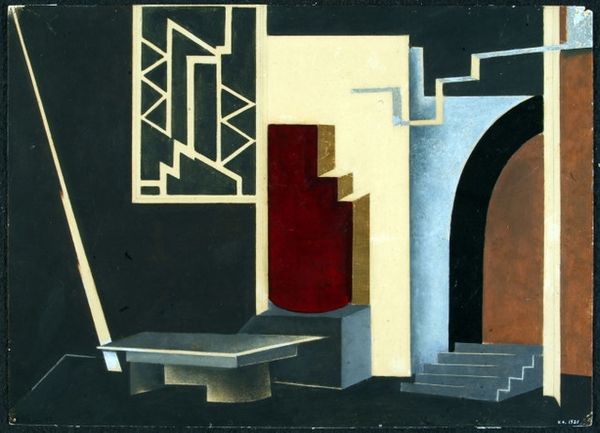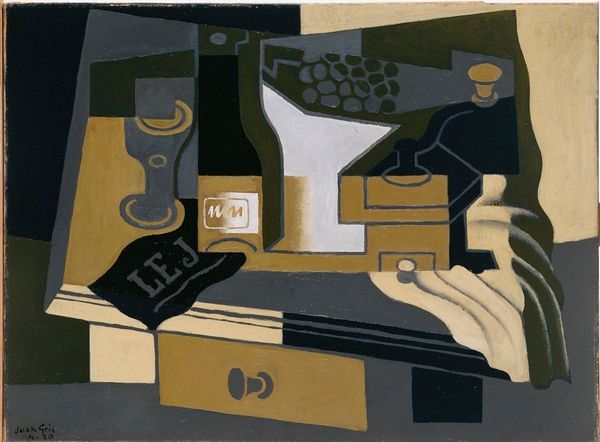
painting
#
precisionism
#
painting
#
geometric
#
abstraction
#
cityscape
Copyright: Ralston Crawford,Fair Use
Editor: Here we have Ralston Crawford's "Boat and Grain Elevators No. 2" from 1942, a painting focusing on these distinct geometric forms. There is something so stark and flattened about this depiction. What draws your attention to this piece? Curator: The emphasis for me falls squarely on the materials depicted and how they interact. Think of the heavy industry in the 1940s – grain elevators representing agriculture and food production, alongside the boat, a symbol of trade and transportation of goods. Crawford isn’t just painting objects, but celebrating the materials, labor, and infrastructure that supported the nation, especially during wartime. Editor: So, you are saying it reflects an artistic response to industry itself? Curator: Precisely. Notice how he abstracts the forms but never fully abandons recognizability? He's examining the impact of these material conditions on the landscape. Consider the production – the boat signifies the culmination of raw materials transformed by human labour, and the elevators represent the processing and storing of grains essential for sustaining a working class. What kind of dialogue does it spark for you? Editor: Well, I find the near-absence of people somewhat unsettling. Almost like a monument *to* industry, rather than something *for* the people, paradoxically. The shapes appear almost menacing despite the soft colors. Curator: I find your read on its tone interesting. Crawford might be quietly asking questions about whose labour truly benefits from this industrial growth. Look at the smooth application of the paint, denying any gestural quality – a deliberate echo of the efficiency celebrated by industry, yet hinting at the anonymity within the system. The materiality of the paint reflects the hard surfaces of the subject itself. Editor: I didn't see that at first, but examining the brushstrokes with production in mind really does alter my perception. The painting feels more like a critical assessment now than a mere celebration. Curator: Seeing the links between production, labour, and societal context is always my goal. Editor: Thanks! You've certainly offered me a different point of view to examine this painting through, and how the meaning is impacted by industry.
Comments
No comments
Be the first to comment and join the conversation on the ultimate creative platform.
